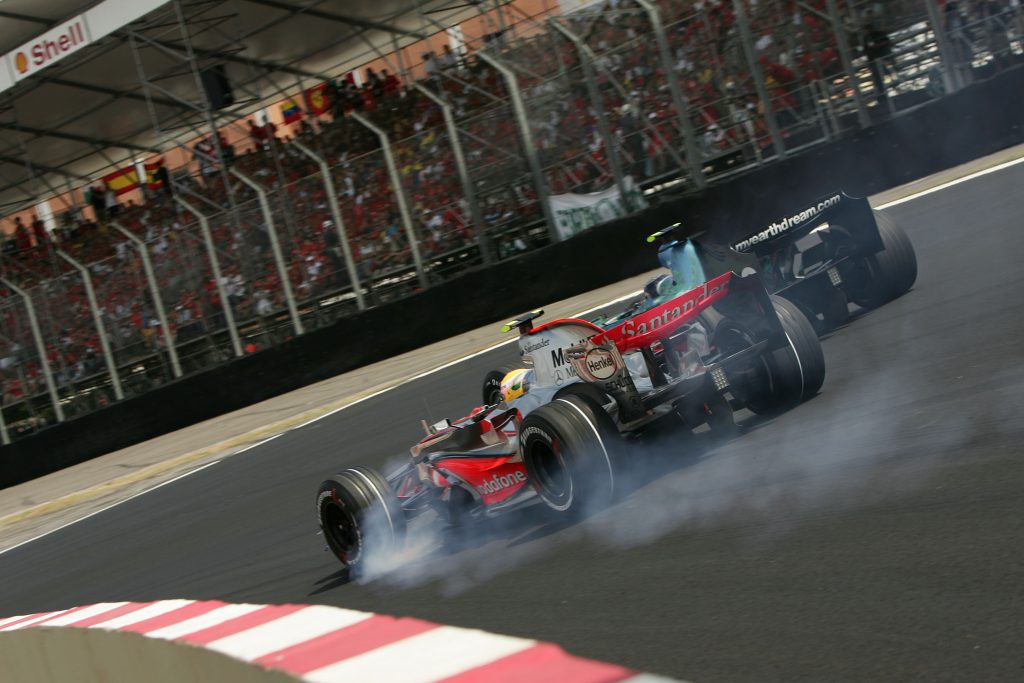Up Next

Lewis Hamilton should really be an eight-time Formula 1 world champion by now.
How the title slipped through his and McLaren’s fingers in his rookie season of 2007 is a tale of some intrigue which has still never been satisfactorily explained.
It isn’t about to be here, either. For we still don’t definitively know what was going on behind the scenes in the last two races of China and Brazil – where Hamilton’s 12-point lead evaporated to a one-point deficit.
But there is almost certainly a tale to tell. Back in 2012 I asked Lewis if he ever discovered exactly what had happened. He replied, “I didn’t know at the time. But I do now. It’s not something I can talk about.”
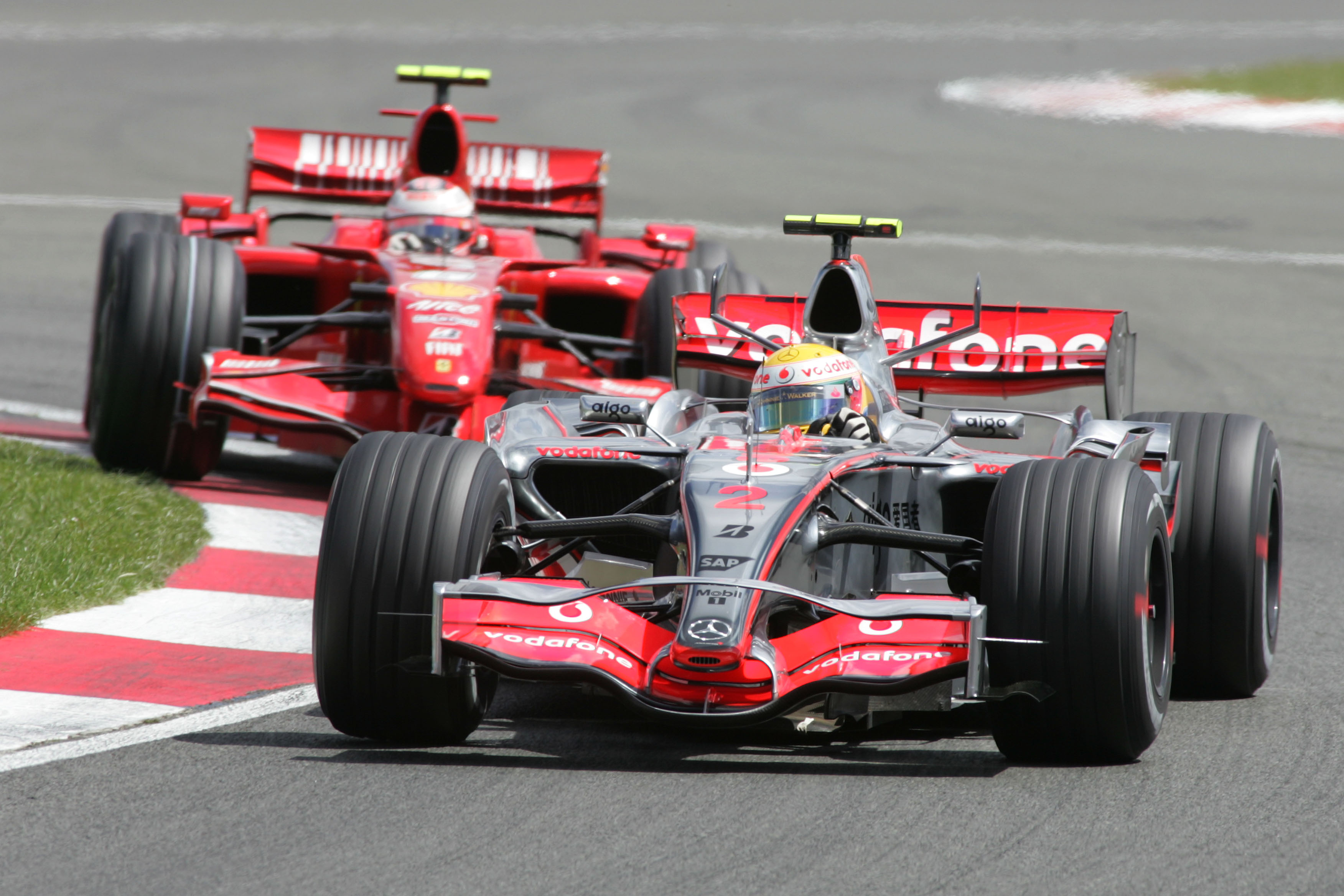
The backdrop to the on-track action was the ongoing saga of the FIA’s case against McLaren for alleged industrial espionage, for having had access to 680 pages of information on the car of title rival Ferrari. As supplied by Ferrari’s disaffected former chief mechanic Nigel Stepney.
FIA President Max Mosley – with a long history of antipathy for McLaren boss Ron Dennis – had chosen to get the governing body involved in this case. The team was infamously fined $100million and deducted all its constructors’ championship points (losing it what would have been the constructors’ title).
The possible implications included McLaren being banned from competing at all in 2008
But the drivers of the team – Hamilton and Fernando Alonso – were allowed to keep their points. This decision came with four rounds of the championship still to go and to have deducted the drivers’ points would have completely killed any tension in the fighting out of the championship and given it to Ferrari’s Kimi Raikkonen (who would go on to win it anyhow, but at the final race).
It was said that Bernie Ecclestone – with a championship to promote – had requested of Mosley not to extend any penalty to the drivers.
But although that penalty had been announced and applied as we got to China for the penultimate round of the championship, McLaren still had hanging over it an FIA investigation to determine whether there was any Ferrari DNA in the design of McLaren’s 2008 car.
If the governing body had decreed that there was, the possible implications included McLaren being banned from competing at all in 2008. Which could quite conceivably have brought the whole team down. That was certainly a genuine fear inside McLaren at the time.
The case didn’t need to be proven, in the legal sense, as it was in theory purely a sporting matter. But the political undertones, given the adversarial relationship between Dennis and Mosley, were implicit.
That was the backdrop to the bizarre series of dropped balls in Hamilton’s last two races of that season.
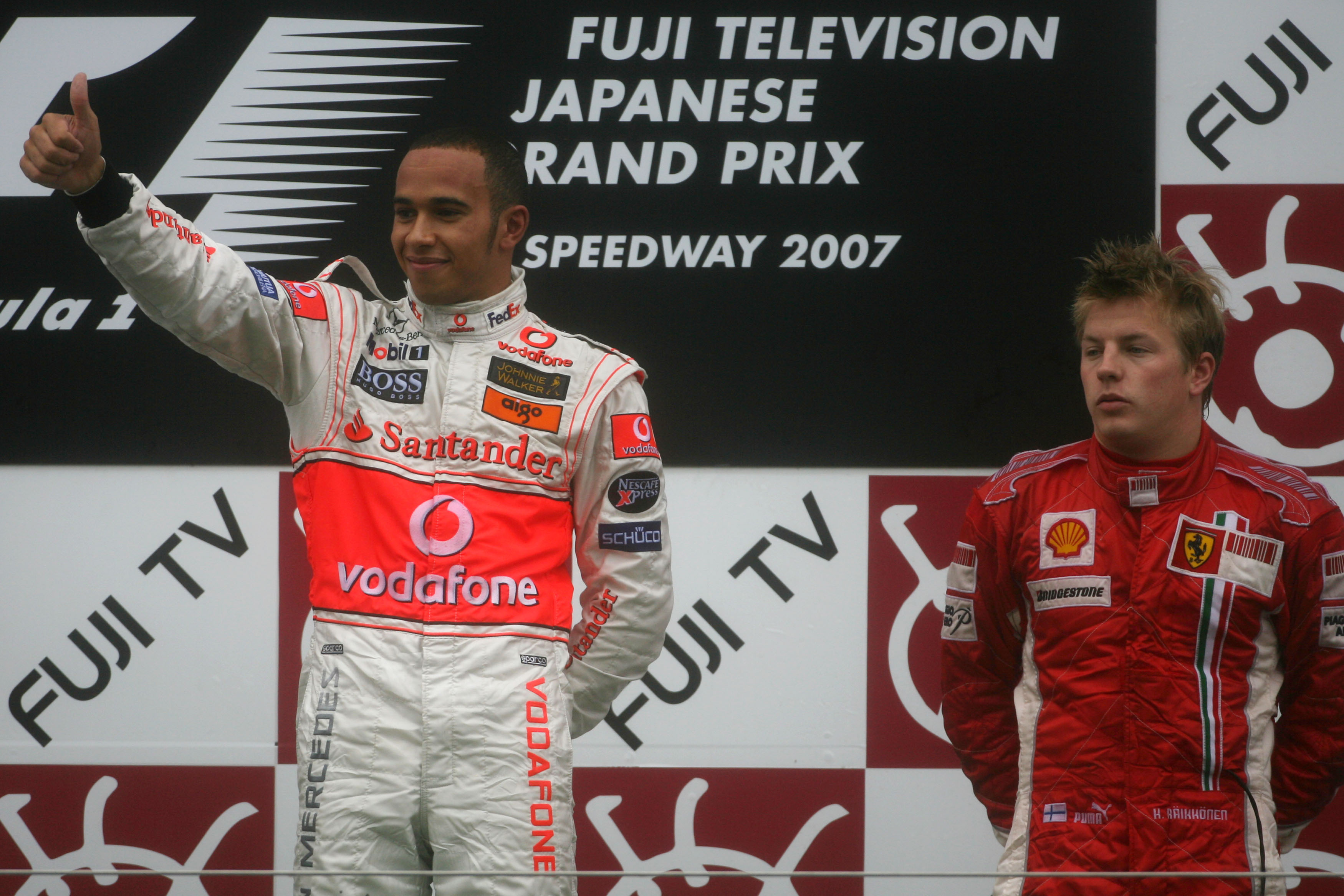
Off the back of a masterful victory in the wet of Fuji – where Alonso had crashed out all on his own – Hamilton came into China with a 12-point lead over Alonso and 17 clear of Raikkonen (this under the 10-8-6-4-3-2-1 scoring system).
Barring misfortune, it was difficult to envisage how Hamilton could fail to become the first ever rookie world champion. If he’d won the Shanghai race, he’d have clinched the title with one round still to go.
Consider the scale of that for a second – from the perspective of those today questioning his level because of how dominant his Mercedes has been in the last few years.
Yes, the 2007 McLaren was a good car, not dominant – the Ferrari tended to be faster on more aerodynamically-demanding tracks, the McLaren faster on more ‘mechanical/tyre temperature’ sorts of tracks – but good.
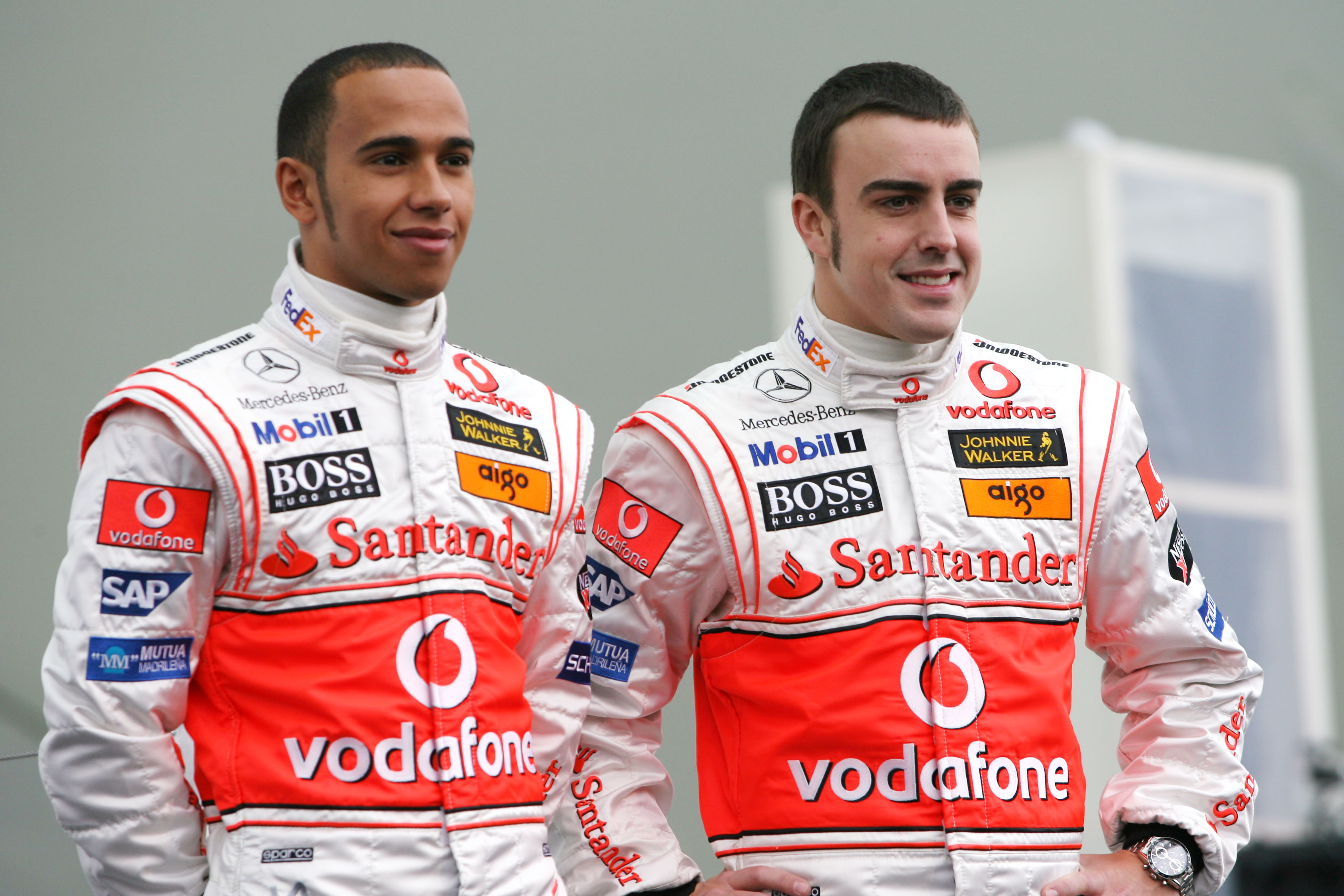
Alongside him was the great Alonso, double world champion, vanquisher of Michael Schumacher, in his sixth season of F1. Yet Hamilton – as a 22-year-old rookie – was entering the last two rounds of the championship comfortably clear of both Alonso and Ferrari.
It wasn’t by fluke, either. Several times in that rookie season he had flat outperformed Alonso. Not every time. But several times.
That was an astonishing, unprecedented, performance. If Hamilton had retired at the end of that rookie season, he would still have to be considered one of the all-time greats.
“If this is the way it’s going to keep going then it’s probably not somewhere I really want to be” :: Lewis Hamilton
Remarkably, coming into the Shanghai weekend, he was actually talking of quitting. Though no one was taking his threat very seriously, he mentioned it in reference to the possibility that he would have a grid penalty applied to him in China because of his driving behind the safety car in Japan, where his pulling to one side, lifting off and then accelerating (as he tried to retain temperature in his brakes) was cited as a contributory cause to the Mark Webber/Sebastian Vettel shunt behind.
On top of the internal stresses of his competition with Alonso and the latter’s communication breakdown with Dennis, this latest incident just piled on the pressure even more.
“I don’t think I put a foot wrong [at Fuji],” said Hamilton on the Thursday in China. “I didn’t do anything to harm anyone else or put anyone in danger. But I’ve come to China and no doubt I’m going to be punished for something…
“It’s just a shame for the sport and if this is the way it’s going to keep going then it’s probably not somewhere I really want to be.”
Hamilton made these comments ahead of a meeting between the powers on Friday to determine whether there’d be a penalty or not.
One of those very close to Ecclestone commented privately to me beforehand, “I’ve told him this is too much. Yes, we want to make the end of the season exciting, but this is too much. People aren’t going to buy it.”
It was decided no penalty would be applied.
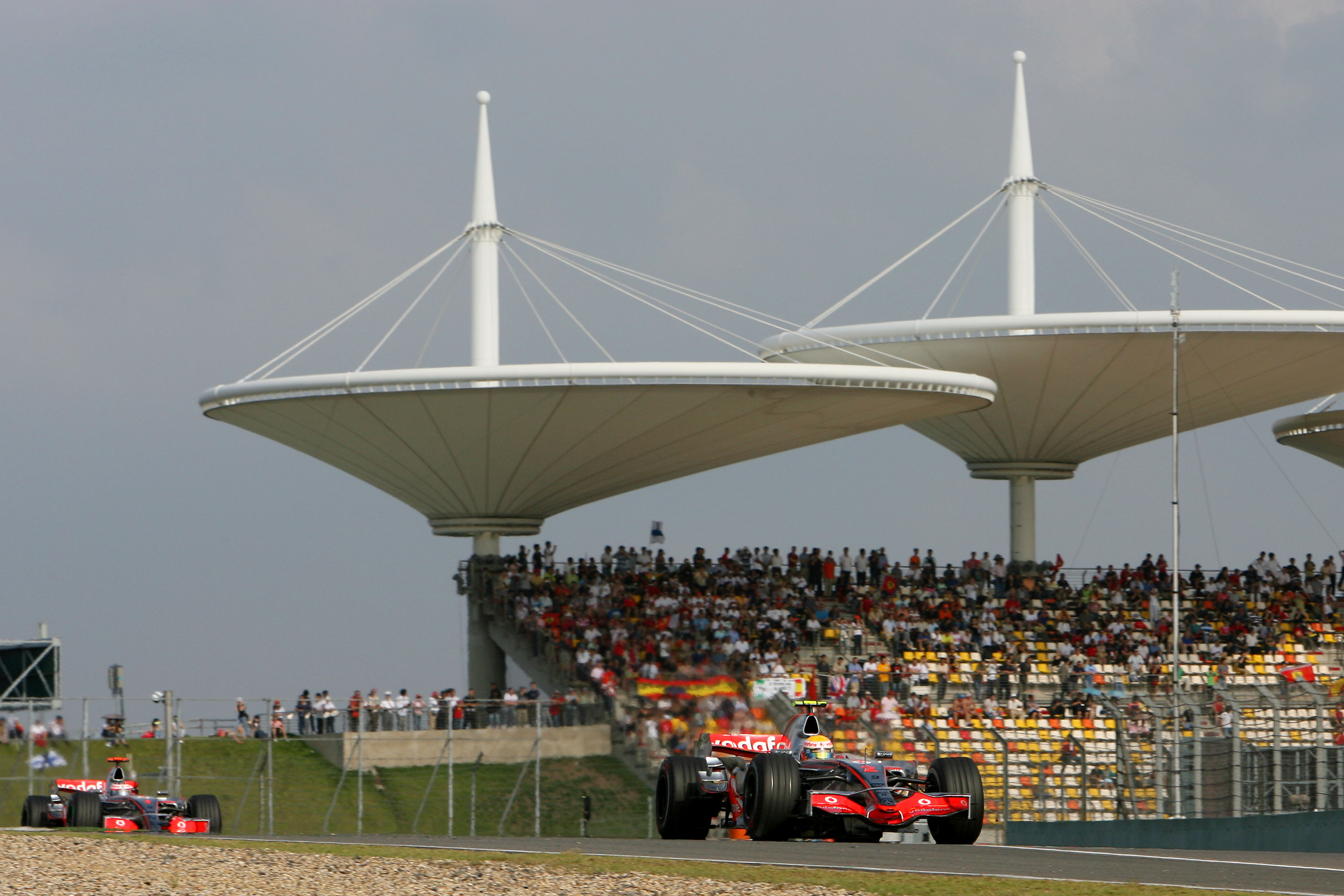
Under such intense pressure, Hamilton delivered a scintillating pole position. He’d been generally nip and tuck with his team-mate in Q1 and Q2 – but in Q3 he suddenly delivered a devastating lap, 0.5s faster than Alonso, who was back in fourth, behind the Ferraris of Raikkonen and Felipe Massa.
A furious Alonso refused to believe anyone could drive 0.5s quicker than him and had dark thoughts of team sabotage, making reference to tyre pressures. He kicked a door off its hinges in the McLaren team’s paddock building.
The track was wet for the start of the race, with everyone on intermediate tyres. Hamilton took off into an immediate lead and just disappeared, pulling out chunks of time over Raikkonen, Massa and Alonso.
Raikkonen ran longer to the first refuelling stops, cutting Hamilton’s lead down from 8.5s to 4s, but with Alonso now 17s behind. The same set of intermediate tyres were left on as new ones may have overheated on the drying but still wet track.
But then the rain returned – and Hamilton’s near-slicks were disastrously gripless. The Ferrari was always kinder to its rear tyres than the McLaren and Raikkonen quickly ate up the 4s gap, overtook and pulled away.
The shower was soon over and the track began to quickly dry. Why didn’t McLaren bring Hamilton in at this point and fit a set of slicks?
This is the question that has opened the door to speculation. Especially when combined with what would unfold in Brazil.
The official version went like this: Hamilton’s race engineer and Alonso’s were each trying to maximise their own chances, obviously. The radar was suggesting there was going to be no more rain before the end.
But McLaren did not want to tyre-offset Hamilton against Alonso (who McLaren had already decided was going to have his contracted terminated after the season, following events at the Hungarian Grand Prix when intra-team tensions reached a flashpoint).
The concern was if McLaren pitted Hamilton for slicks but the rain returned and Alonso had been able to use his greater fuel range (he was fuelled for an extra three laps) to get straight from inters to more inters, then Hamilton would needed to have made a corrective stop to get off the slicks and would have fallen well behind.
So the team left both cars out there, waiting to see what the weather was going to do.
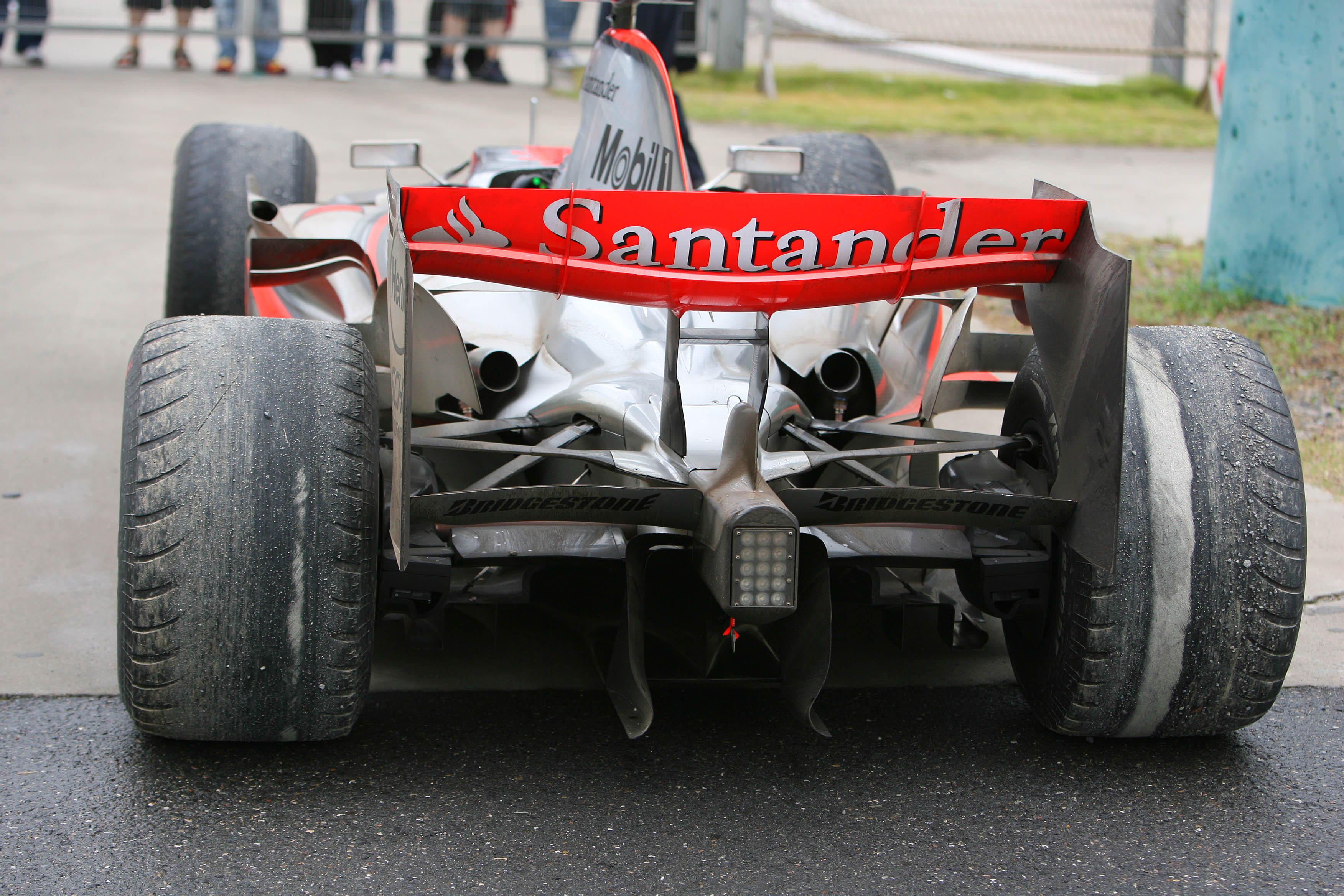
Hamilton’s rears were more worn than Alonso’s and a thin white line of canvas began to appear. McLaren left him out there for yet another lap. It left him out there so long that there was literally no tread left on the right-rear and as he tried to take the tight left-hander on the pitlane entry, he skated into a gravel trap and was beached there.
Raikkonen won from Alonso, narrowing Hamilton’s lead to four points over Alonso, seven over Raikkonen as they headed to the Brazilian finale.
Hamilton qualified second to Massa, who was always dynamite around Interlagos and was especially so in a Ferrari well-suited to the very hot track (the McLaren tending always to run its rears a little too hot). Raikkonen and Alonso shared the second row.
It’s easy to plot a credible storyline that has Hamilton as the unwitting victim of a bigger political game
Massa stormed off into the lead, Raikkonen was quicker off the grid than Hamilton and was ahead into the Senna Esses. As Raikkonen corrected an oversteer snap into there, Hamilton was tight on his tail, trying to position himself for a run on him.
Raikkonen delayed getting on the power just long enough to catch Hamilton by surprise, forcing him to back off just as Kimi stood on the gas. With Hamilton’s momentum checked, Alonso was able to slip by.
Making arguably his first rookie-type error of the season, Hamilton attempted to repass Alonso into Turn 4, locked up and ran off circuit. He rejoined seventh, needing to finish fifth on the assumption Raikkonen won – which looked likely given how quickly the Ferraris were pulling away from Alonso, and that Massa was always going to be driving to team orders to secure Raikkonen the title.
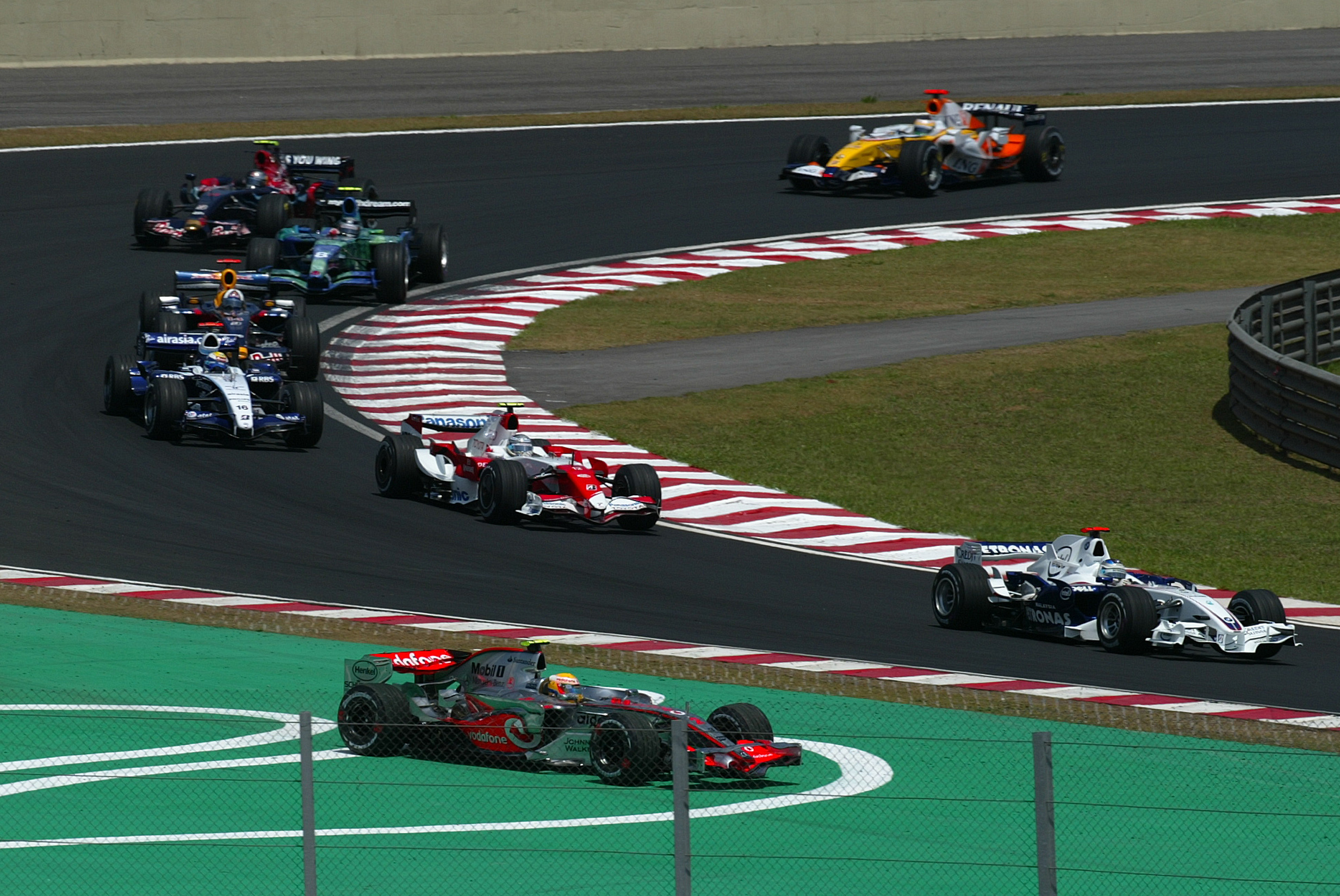
In his recovery drive, Hamilton was just on the point of lining up Webber’s fifth-placed Red Bull when he suddenly lost gears. Around 20s were lost as he coasted along while the team talked him through how to reboot the electrics.
When he got going again he was 18th, almost half-a-minute adrift of the required fifth place. But there were still 46 laps left.
Making his first stop on lap 20, he was on target. That’s when it began going wrong all over again.
The official version is: the team decided to fuel him short to help make up places in a short middle stint of the two-stop race. Only when looking at the tyres that had just come off his car and realising how worn they were did McLaren realise that short stint it had fuelled him for would mean a final stint far longer than the tyres were going to be capable of doing.
Hence he would have to be pitted a third time – costing him an extra 28s and dropping him to seventh at the end, with Raikkonen – allowed past by Massa – the winner of the race and title.
Given the unlikely sequence and sheer number of team errors on Hamilton’s car in just two races and given the implied overhanging threat of the team not being able to compete in 2008, essentially relying on Max Mosley’s favour, it’s easy to plot a credible storyline that has Hamilton as the unwitting victim of a bigger political game, just as he was on the verge of making history as a rookie world champion.
But did it really happen like that? Maybe we’ll find out some day.
In the meantime all we have is that Hamilton line to my question in Monaco in 2012: “I didn’t know at the time. But I do now. It’s not something I can talk about.”


